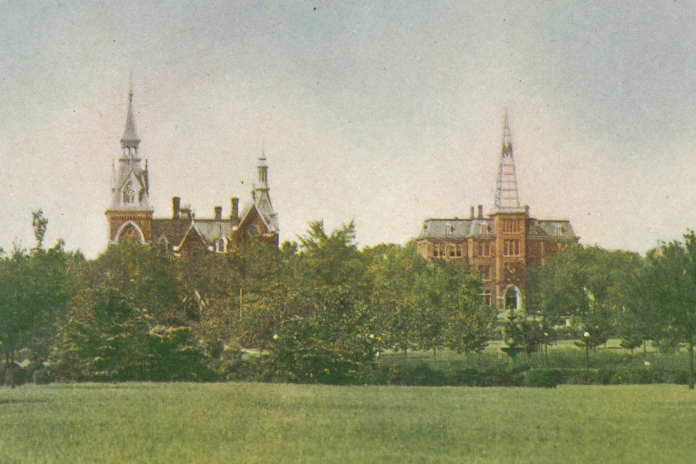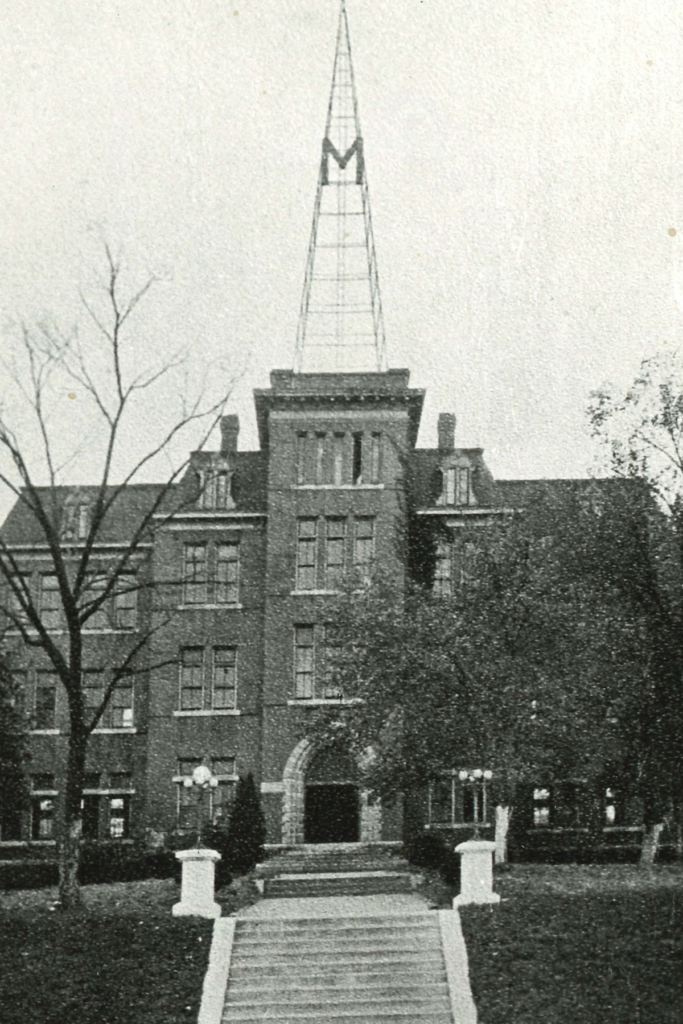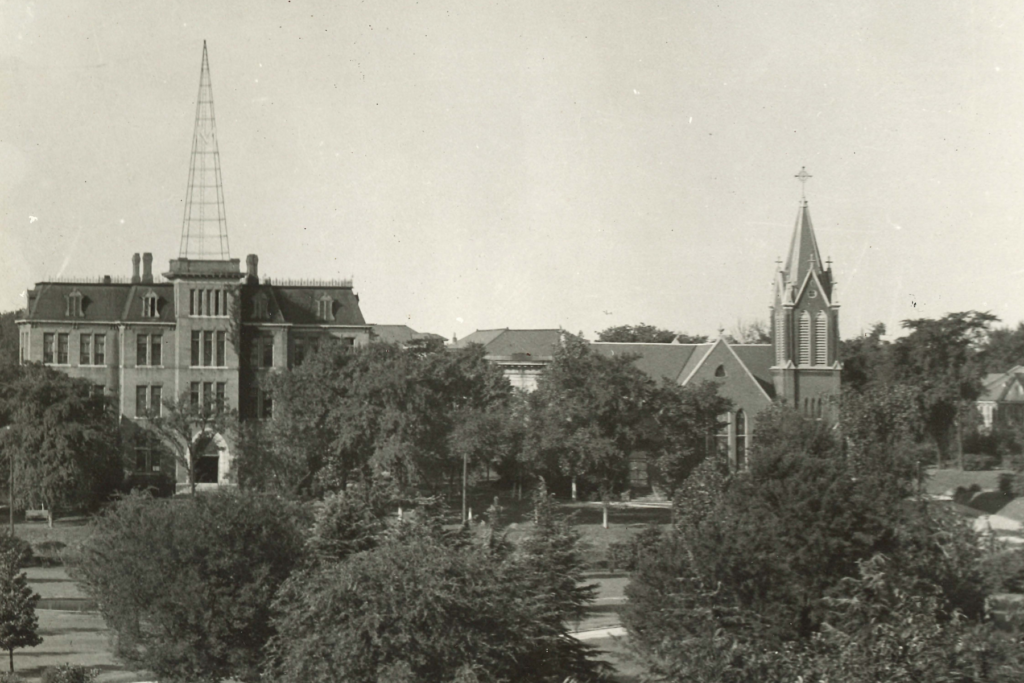
The first radio station in Macon — and the second in Georgia — started 100 years ago as a physics experiment on the Mercer University campus.
WMAZ, which stood for Watch Mercer Attain Zenith, officially hit the airwaves on Oct. 30, 1922. It received international attention just a few years later when Mercer became one of four colleges in the world to offer educational courses by radio, broadcasting up to 3,000 miles away.
But the University was a pioneer in radio long before then.
“Even very far back, if the early history of radio and wireless could be called far back, Mercer was one of the few educational institutions experimenting with the new telegraphy,” according to an article published in the Jan. 18, 1925, edition of The Atlanta Journal.
Before the turn of the century — not long after Guglielmo Marconi discovered in 1895 that he could use radio waves to transmit signals over several kilometers — physics professor William E. Godfrey set up a simple wireless station at Mercer.

Around 1910, a four-wire, flat top antenna was put up between the two towers of the Administration Building. Using a crystal radio receiver, Mercer received messages from a government station in Arlington, Virginia. A spark coil transmission set allowed the University to send messages to Atlanta.
Unfortunately, a severe storm destroyed the equipment in 1911, and finances prevented its immediate replacement.
In 1918, Dr. Claude Russell Fountain came to the University to work as a physics professor. By this time, he’d been studying radio for nearly two decades, including training radio engineers for the U.S. Army during World War I, and he brought that knowledge with him to Mercer.
Using a 10-watt power set, Dr. Fountain broadcast the spring 1921 commencement exercises. In the fall, experimentation began in earnest. Power was increased to 50 watts, and a six-wire antenna swung from the flagpole to Willingham Hall. That spring, commencement exercises were again broadcast.
In 1922, Dr. Fountain and his students began installing more high-powered radio equipment on campus. In August, a 70-foot steel tower was built on top of Willingham, and an enlarged antenna was installed. The station was granted its license and first went on air as WMAZ in October.
“The Mercer station was designed and assembled by Dr. Fountain, who devoted his entire summer to the work,” according to an article in the Nov. 17, 1922, edition of The Mercer Cluster. “It has so far proven itself unusually efficient and compares favorably with stations valued at ten thousand dollars.”
In the early days, programs consisting of lectures and music filled the airwaves for about three hours for several evenings each week. There were no recordings to play, so musicians frequently performed in a special soundproof studio in Willingham.
Still, there were bigger things to come.
In December 1923, Mercer started constructing a 175-foot tower, which was the tallest in the South at the time. It featured a large, electric “M,” a gift from the class of 1924, that was powered by 65 light bulbs.

In November 1924, the radio station, now 100 watts, began offering expanded programming.
“For the first time in the history of southern education, Mercer University is utilizing its own radio broadcasting station to offer regular college courses to the public,” according to an article in the December 1924 edition of The Mercer Alumnus magazine.
The courses were offered one night a week and included current literature, religious education, current events and history, and journalism.
“A feature of the (journalism) course will be the assignments (the professor) will make to his unseen students and ask that they send papers for correction by mail,” the article in The Mercer Alumnus magazine stated.
In addition, evenings were set aside for religious services and programs by campus clubs and community organizations.
By 1925, the station needed money to maintain its programming and grow, and Dr. Fountain pleaded for large business associations and civic clubs to support the station monetarily. His fundraising campaign was successful, and the station increased its power to 500 watts.
WMAZ continued to serve the community before going off the air in 1926, around when Dr. Fountain left Mercer. Programming resumed in 1927 when Mercer turned the station over to the Macon Junior Chamber of Commerce, and eventually the landmark tower was removed from Willingham.
WMAZ changed hands over the years, finally losing its call letters in 1996, when the radio station changed to WMWR.
Information from the Mercer University Archives was included in this report.









